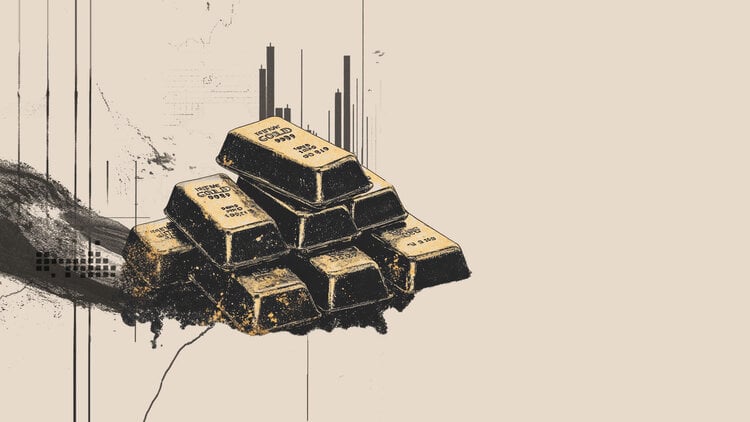- USD/CAD loses further ground as higher oil prices support the commodity-linked Canadian Dollar.
- WTI rebounded from an eight-week low of $74.24 on rising geopolitical tensions in the Middle East.
- The Fed is expected to keep rates unchanged at its July meeting.
USD/CAD extends losses after retreating from an eight-month high of 1.3865 on Monday, trading around 1.3840 during the Asian session on Wednesday. Recovering crude oil prices are supporting the commodity-linked Canadian Dollar (CAD) against the US Dollar (USD), as Canada is the largest exporter of crude oil to the United States.
The price of West Texas Intermediate (WTI) crude oil is trading around $75.40 per barrel at the time of writing. WTI rebounded from an eight-week low of $74.24 hit on Tuesday, attributed to rising geopolitical tensions in the Middle East.
The Israeli government says it killed Hezbollah’s top commander in an airstrike in Beirut on Tuesday, in retaliation for Saturday’s cross-border rocket attack in Israel. The escalation came despite diplomatic efforts by U.S. and U.N. officials to avoid a wider conflict that could inflame the entire Middle East, according to Reuters.
Scotiabank Chief FX Strategist Shaun Osborne noted that the CAD is dealing with a significant wave of negative sentiment. “The latest CFTC data showed a substantial build-up of bearish positioning in the CAD. While positioning appears excessive, the weak sentiment is largely a reflection of the Bank of Canada’s easing bias.”
On the data front, Canada’s Gross Domestic Product (MoM) for May is expected to be released on Wednesday. On the USD front, the Federal Reserve is expected to keep rates unchanged at the next meeting later in the North American session.
However, there is growing anticipation of a rate cut in September, putting downward pressure on the US dollar. Moreover, signs of cooling inflation and easing US labor market conditions are further fuelling expectations of multiple rate cuts by the Fed this year, which could total three cuts. The CME’s FedWatch tool indicates a 100% probability of at least a quarter-percentage point cut in September.
Canadian Dollar FAQs
The key factors determining the Canadian dollar (CAD) are the level of interest rates set by the Bank of Canada (BoC), the price of oil, Canada’s main export, the health of its economy, inflation and the trade balance, which is the difference between the value of Canadian exports and its imports. Other factors include market sentiment, i.e. whether investors are betting on riskier assets (risk-on) or looking for safe assets (risk-off), with risk-on being positive for the CAD. As its largest trading partner, the health of the US economy is also a key factor influencing the Canadian dollar.
The Bank of Canada (BoC) exerts significant influence over the Canadian dollar by setting the level of interest rates that banks can lend to each other. This influences the level of interest rates for everyone. The BoC’s main objective is to keep inflation between 1% and 3% by adjusting interest rates up or down. Relatively high interest rates are generally positive for the CAD. The Bank of Canada can also use quantitative easing and tightening to influence credit conditions, with the former being negative for the CAD and the latter being positive for the CAD.
The price of oil is a key factor influencing the value of the Canadian dollar. Oil is Canada’s largest export, so the price of oil tends to have an immediate impact on the value of the CAD. Generally, if the price of oil rises, the CAD rises as well, as aggregate demand for the currency increases. The opposite occurs if the price of oil falls. Higher oil prices also tend to lead to a higher probability of a positive trade balance, which also supports the CAD.
Although inflation has traditionally always been considered a negative factor for a currency, as it reduces the value of money, the opposite has actually occurred in modern times, with the relaxation of cross-border capital controls. Higher inflation typically leads central banks to raise interest rates, which attracts more capital inflows from global investors looking for a lucrative place to store their money. This increases demand for the local currency, which in Canada’s case is the Canadian dollar.
The released macroeconomic data measures the health of the economy and can have an impact on the Canadian Dollar. Indicators such as GDP, manufacturing and services PMIs, employment and consumer confidence surveys can influence the direction of the CAD. A strong economy is good for the Canadian Dollar. Not only does it attract more foreign investment, but it can encourage the Bank of Canada to raise interest rates, which translates into a stronger currency. However, if the economic data is weak, the CAD is likely to fall.
Source: Fx Street
I am Joshua Winder, a senior-level journalist and editor at World Stock Market. I specialize in covering news related to the stock market and economic trends. With more than 8 years of experience in this field, I have become an expert in financial reporting.






